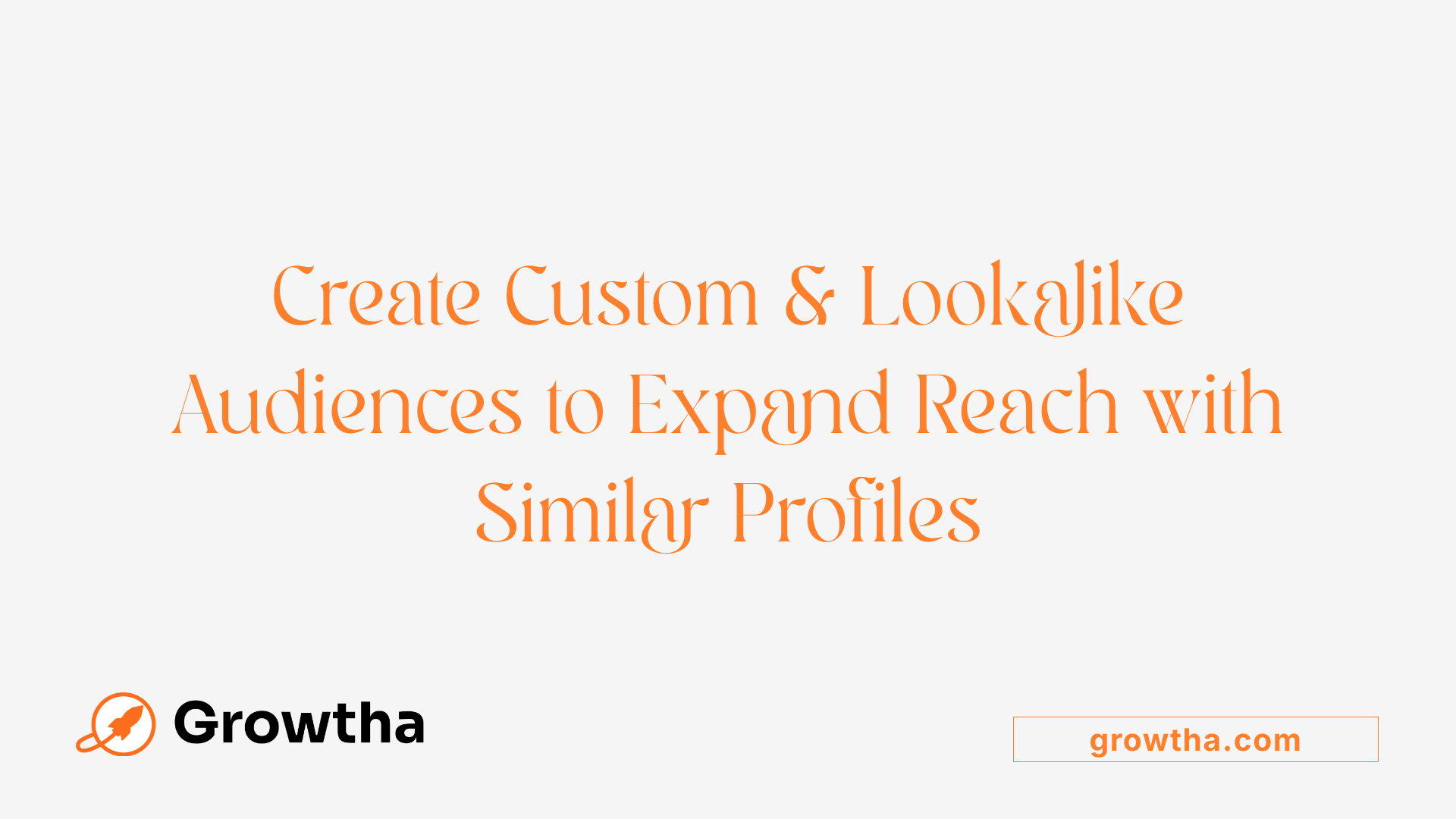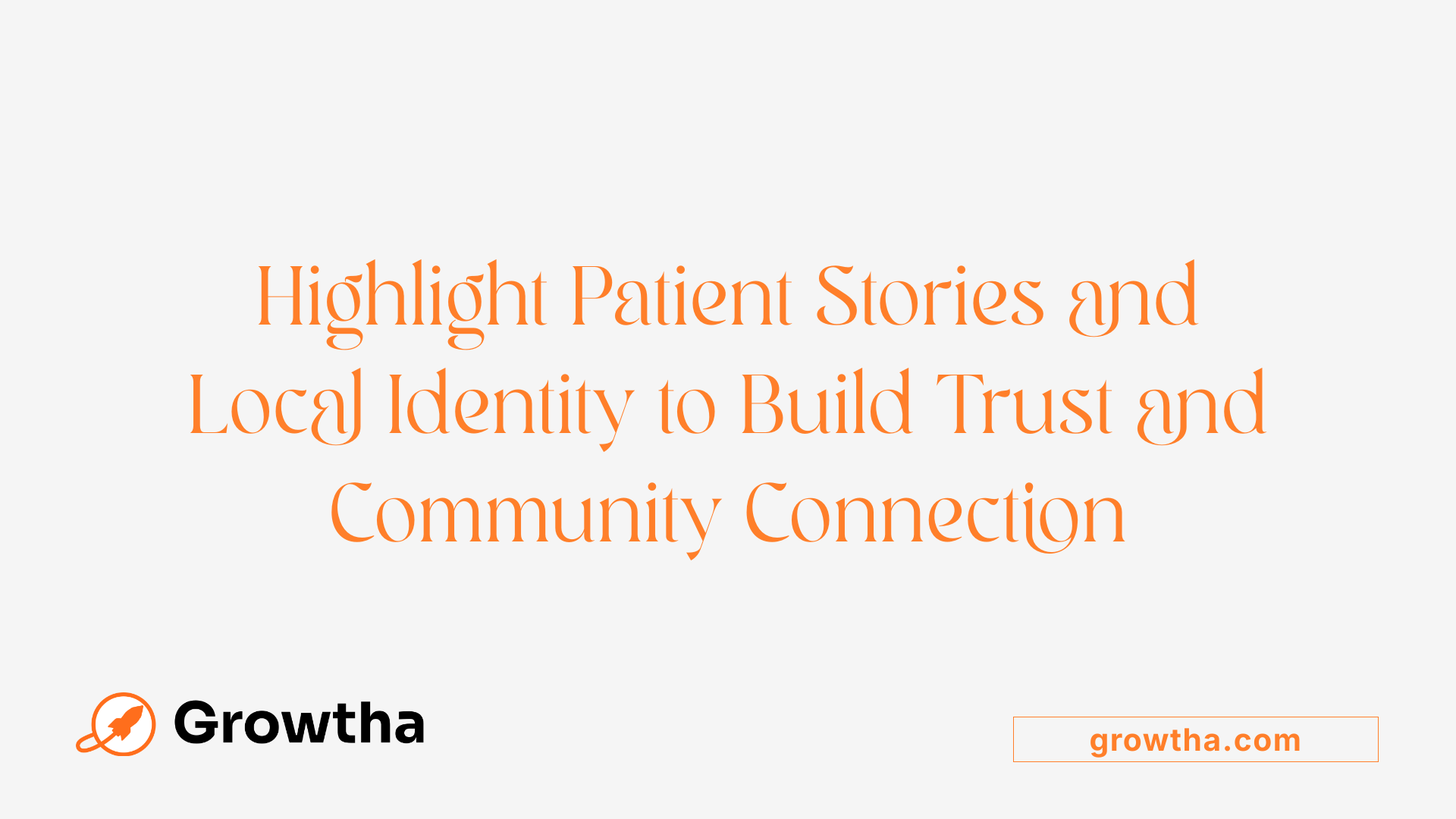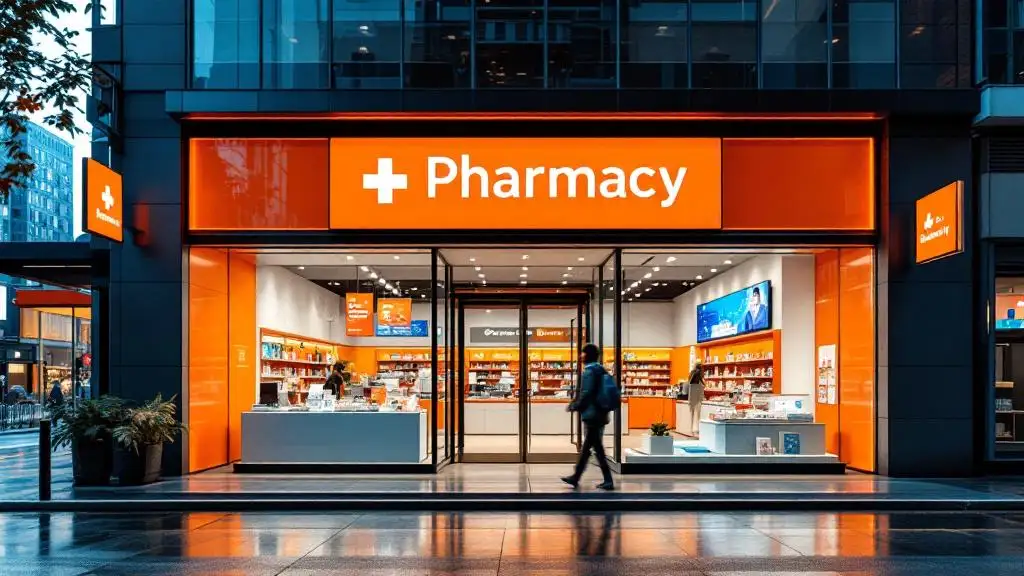How to Use Facebook Ads to Promote Medical Services
Boost Your Healthcare Practice with Strategic Facebook Advertising


How to Use Facebook Ads to Promote Medical Services
Unlocking the Potential of Facebook Ads for Medical Services
In the digital age, Facebook advertising has become an indispensable tool for healthcare providers aiming to expand their reach, enhance brand recognition, and attract new patients. This comprehensive guide explores proven strategies, best practices, and compliance considerations to help medical practices harness Facebook’s powerful advertising platform effectively.
Creating Impactful Facebook Ad Campaigns for Healthcare

How can healthcare providers create effective Facebook ad campaigns to promote their services?
Healthcare providers can develop impactful Facebook ad campaigns by prioritizing valuable, patient-centric content. Instead of mainly self-promoting, they should craft messages that directly address common patient needs and concerns. Using relatable stories or testimonials helps foster trust and builds awareness about the practice.
High-quality visuals are essential. Clear, professional images or videos that resonate with the target audience capture attention quickly. Complement these visuals with compelling calls to action (CTAs), prompting users to book appointments, visit websites, or contact the practice.
Targeting plays a critical role in campaign success. Companies should refine their audience by focusing on geographic location, age groups, and relevant interests. While interest targeting is useful, healthcare practices must be cautious with interest and lookalike audiences, as privacy regulations like HIPAA restrict some detailed targeting options.
To improve campaign performance, it’s advisable to test multiple ad formats. Using videos, carousel ads, or static images allows practices to see which resonates best. Experimenting with different copy lengths and messaging styles through A/B testing identifies the most effective combinations.
Retargeting strategies are also vital. For instance, retargeting website visitors or those who interacted with previous campaigns can boost conversions. Proper ad scheduling, such as avoiding high-competition periods or running ads during peak engagement times, enhances cost-efficiency.
Continuous monitoring of metrics, especially click-through rates and conversions, is necessary. These insights help in fine-tuning campaigns, optimizing budget allocation, and ultimately achieving better ROI.
Combining these approaches, healthcare providers can maintain a dynamic, compliance-minded Facebook advertising presence that attracts new patients, increases engagement, and boosts overall practice growth.
Effective Audience Building Through Facebook Targeting Options

What targeting strategies and audience building techniques are effective for healthcare marketing on Facebook?
Healthcare marketers can significantly improve their outreach by utilizing Facebook’s advanced targeting options. These strategies include using detailed demographic data such as age, gender, location, education, and employment status to segment the audience with precision.
Interest targeting is another crucial component, focusing on users’ online behaviors and shared interests like health-related pages, fitness activities, or wellness topics. This allows practices to reach individuals genuinely interested in health and wellness, increasing the likelihood of engagement.
Behavioral targeting, derived from third-party marketing data, helps identify users based on their purchase habits, online activities, and lifestyle choices. Combining this data with demographic filters creates robust segments tailored to specific healthcare services.
Creating custom audiences is a powerful technique. For example, using Facebook Pixel, practices can retarget visitors who previously viewed their website, ensuring that they stay engaged. Contact lists of existing patients can also be uploaded to create tailored audiences, supporting patient retention and re-engagement.
Developing lookalike audiences involves using existing patient data—such as email lists—to find new users with similar profiles. This approach expands reach efficiently while maintaining relevance.
Audience segmentation is an ongoing process. Regularly updating audience parameters based on campaign data ensures targeting remains precise and effective.
To enhance engagement, deploying captivating ad formats like videos, patient testimonials, and carousel ads boosts interest and trust. Including compelling visuals and authentic stories resonates well with potential patients.
Importantly, all targeting strategies must comply with HIPAA and other privacy regulations. Facebook’s ad policies restrict the use of personal health information and sensitive data, requiring practices to craft compliant messaging.
In addition to targeted advertising, combining retargeting efforts with compelling content and competitive research helps practices stay relevant and trustworthy. These integrated methods lead to a more effective and compliant audience growth approach in healthcare marketing.
Designing Appropriate and Compliant Healthcare Ads

What are best practices for designing Facebook ad campaigns tailored to medical and health services?
Creating effective Facebook ads for healthcare requires a strategic approach that balances compelling visuals, clear messaging, and strict adherence to compliance standards.
Visual and messaging standards in healthcare advertising emphasize the use of relatable images that resonate with the target audience, such as patients, caregivers, or community members. These visuals should be high-quality, authentic, and focus on positive outcomes or lifestyle benefits rather than self-promotion or alarming imagery.
Using Facebook’s advanced targeting capabilities allows healthcare marketers to precisely reach qualified users. Demographic targeting by age, gender, and location, combined with interest targeting like fitness or health pages, enables practices to focus on individuals most likely to convert. Lookalike audiences, created from existing patient data, and custom audiences—such as website visitors retargeted via Facebook Pixel—further refine reach and foster patient retention.
Incorporating patient testimonials and emphasizing local identity enhances trust and community connection. Real patient stories or reviews serve as social proof, positively influencing potential patients.
Experimentation with various ad formats—videos, carousels, and lead ads—is vital to identifying what works best. Video ads, especially short, authentic clips highlighting patient success stories or practice features, tend to drive high engagement. Carousel ads can showcase multiple services or staff members, while lead ads simplify appointment scheduling or inquiries.
To avoid clutter and sensitive content, ads should be straightforward and focused, with compelling calls-to-action. They should highlight tangible benefits, such as improved health outcomes or convenience, without using scare tactics or violating privacy standards.
Compliance is crucial. Ads must adhere to HIPAA regulations and platform policies, avoiding sensitive health details or images that reveal personal health information without consent. Ensuring language is respectful and non-stigmatizing helps maintain trust and legal safety.
Creative messaging should also match patient personas and local community needs. For instance, targeting seniors with ads emphasizing chronic disease management or young adults with wellness services aligns content with audience interests.
Finally, ongoing creative testing and campaign adjustments are essential. Monitoring performance metrics like click-through rates, conversions, and engagement helps refine targeting, messaging, and creative elements. A systematic approach of continuous testing, along with a well-planned budget and integrated strategy with other digital channels like Google Ads, ensures sustained success and optimal ROI.
In conclusion, healthcare providers who combine authentic, compliant, and targeted ad creative with rigorous testing and performance tracking will optimize their Facebook advertising efforts, resulting in increased patient engagement and trust.
Navigating Facebook’s Advertising Policies and Ensuring Compliance
What are the key Facebook advertising policies and compliance considerations for healthcare providers?
Healthcare providers seeking to advertise on Facebook must be well-versed in the platform’s strict advertising policies, which aim to protect user privacy and ensure responsible health communication. These policies include limitations on the use of sensitive health information, prohibiting the promotion of specific medical conditions, treatments, or outcomes that could be misleading or invasive.
One critical restriction concerns targeting capabilities. For 2025, Facebook has implemented new policies that limit the use of lower-funnel events such as Purchase, Add to Cart, or Sign Up for ad optimization in healthcare. Instead, advertisers are encouraged to focus on upper-funnel actions like Engagement, Landing Page Views, or Video Views, which are less intrusive and better aligned with privacy standards.
In addition, the use of Facebook’s Conversions API (CAPI) has been restricted, especially for health-related brands. This API traditionally allowed for detailed tracking of user interactions by sharing pixel data directly from advertiser servers. However, recent policy updates have curtailed the sharing of detailed health information, reducing the granularity of targeting and optimization capabilities.
Ads that mention specific health conditions, treatments, or claims face increased scrutiny, requiring advertisers to avoid making unsubstantiated or misleading health claims. Sensitive health data cannot be used to build or refine audiences, which significantly impacts retargeting options and can increase costs.
To navigate these complex requirements, healthcare providers are encouraged to prioritize collecting first-party data directly from their patients—such as email lists, appointment histories, or consented surveys. Employing alternative tracking methods, like server-side tracking or custom event coding on their websites, can help maintain some level of campaign measurement.
Diversifying advertising approaches by emphasizing engagement, brand awareness, or educational content over direct product promotion is advisable. Ultimately, maintaining compliance involves transparency, obtaining explicit user consent, and respecting privacy regulations, all while adapting strategies to evolving policies.
Quantifying Success and Optimizing Healthcare Facebook Campaigns
How can healthcare professionals measure and optimize the performance of Facebook ad campaigns?
Optimizing Facebook advertising for healthcare practices hinges on accurately measuring campaign performance through a range of analytics and tracking tools.
First, healthcare marketers should utilize Facebook Ads Manager to monitor core metrics such as click-through rate (CTR), cost-per-lead (CPL), and return on ad spend (ROAS). High CTR indicates engaging content, while CPL helps evaluate cost efficiency in acquiring new patients. ROAS provides insight into overall profitability from ad spends.
Regular A/B testing plays a crucial role in refining campaigns. By experimenting with different ad creatives, audiences, and messages, marketers can identify what resonates best with their target demographic. For instance, testing short versus long copy, different visual styles, or varied calls-to-action (CTAs) enables continuous improvement.
Conversion tracking is essential for understanding how ads translate into actual patient actions. Tools like Facebook Pixel and the Conversions API allow for precise attribution—tracking actions such as appointment bookings or contact form submissions. Implementing these tools ensures data collection is accurate, even with increasing privacy restrictions.
Adjusting audiences and bids based on performance data helps optimize ad delivery. Analyzing segment-specific results guides modifications in demographic, interest, and location targeting. Bidding strategies can be tuned to prioritize conversions, ensuring budget efficiency.
Ongoing analysis is vital. This involves reviewing campaign results periodically to identify trends, such as seasonal variations in patient inquiries or specific days when engagement peaks. Budget adjustments can then align with these insights to maximize impact.
Competitor analysis and ongoing research into industry trends enable healthcare providers to stay ahead. Monitoring competitors’ ad strategies and audience engagement can reveal new opportunities for targeting.
Leverage AI tools like Averi, which automate ad content creation, audience segmentation, and performance management. These technologies can streamline campaign workflows, reduce manual effort, and uncover insights that improve targeting precision.
Finally, continuous creative refinement—using high-quality visuals, authentic testimonials, and compelling messaging—ensures ads remain relevant and engaging. Regular updates and testing of creative formats help sustain audience interest and maximize ROI.
In summary, by combining diligent performance tracking, ongoing testing, strategic audience management, and the integration of advanced AI tools, healthcare marketers can effectively measure and enhance the impact of their Facebook ad campaigns, leading to increased patient engagement and practice growth.
Case Studies Showcasing Healthcare Facebook Advertising Success
What practical examples or case studies demonstrate successful Facebook ad campaigns in healthcare?
Real-world success stories from healthcare marketers highlight how targeted Facebook advertising can produce impressive results. Boca Raton Aesthetics, a cosmetic practice, serves as a prime example. They generated 37 new leads in just one month with a cost of approximately $7 per lead. Their approach involved personalized offers, optimized ad creatives, dedicated landing pages, and automated lead nurturing systems. This comprehensive strategy not only increased patient inquiries but also ensured efficient budget use.
Another noteworthy case is Primary Care Partners, a primary healthcare provider, which achieved remarkable engagement metrics. Within 30 days, their Facebook campaign delivered over 12,000 impressions, 8,000 clicks, and 360 phone calls. Their success stemmed from a focus on local brand awareness, promoting telehealth services, and using engaging video and image advertisements that resonated with the community.
Meta’s own case studies further demonstrate effectiveness through organizations like LABX Clinic, Naiss Clinic, and Sensodyne UK. These entities successfully utilized Facebook’s detailed audience segmentation and creative ad formats to boost patient inquiries and enhance brand visibility. Campaign strategies centered around targeted messaging, compelling visuals, and patient testimonials played vital roles.
ROI Minds, a healthcare marketing agency, emphasizes a broader, more integrated approach. Their campaigns combine patient-centric research, high-quality content marketing, and strict adherence to healthcare regulations. This holistic method consistently results in measurable benefits, including increased leads, inquiries, and revenue growth.
Overall, these examples reveal that hospitals, clinics, and healthcare brands can achieve significant outcomes through carefully crafted Facebook ad campaigns. Results range from lead generation and customer acquisition to brand building and service promotion, confirming Facebook’s role as a powerful platform for healthcare marketing.
Lessons learned from successful campaigns
From these case studies, several best practices emerge:
- Personalize ad content to match audience needs and preferences.
- Use engaging and high-quality visuals, including patient testimonials and before-and-after images.
- Optimize landing pages for conversions.
- Segment audiences accurately and utilize lookalike audiences for expanded reach.
- Combine multiple ad formats to test and refine messaging.
- Track performance diligently, adjusting strategies based on metrics like click-through rates and cost-per-lead.
- Ensure compliance with healthcare regulations, particularly regarding privacy and ad content.
By applying these tactics, healthcare practices can effectively leverage Facebook advertising to grow their patient base and improve overall clinic visibility. The shared success stories highlight that an integrated, patient-focused strategy yields the best results in this competitive online landscape.
Using Facebook’s Ad Formats and Tools Effectively in Healthcare Marketing
What are the different Facebook ad formats and tools suitable for promoting medical services?
Facebook provides a variety of ad formats that are well-suited for healthcare marketing, each designed to capture attention and promote services effectively. Common formats include image ads, which are simple visuals highlighting specific treatments or offers; video ads, which engage audiences with short, compelling stories or educational content; carousel ads, allowing multiple images or videos within a single ad to showcase different services or testimonials; and lead ads, which facilitate easy collection of patient information directly within Facebook through pre-filled forms. Collection ads are particularly useful for showcasing multiple services or products, engaging users with an immersive shopping-like experience.
To deliver ads effectively, healthcare marketers also rely on Facebook’s powerful targeting tools. These include demographic filters such as age, gender, and location; interest targeting based on users’ preferences and online behaviors, like fitness or health-related pages; and behavioral targeting, which considers actions like previous health searches. Lookalike audiences are created using existing patient data to find new prospects with similar profiles, while custom audiences can target users who have interacted with the practice’s website or uploaded contact lists.
Combining diverse ad formats with precise targeting maximizes engagement. For example, a video ad featuring patient testimonials can be targeted specifically to certain age groups or local communities. Lead ads paired with compelling offers and optimized with clear calls-to-action (CTAs) encourage inquiries and appointment scheduling.
Furthermore, analytics and conversion tracking tools, such as Facebook Pixel and UTM parameters, help measure ad performance, enabling continuous optimization. Regular testing of different formats and messages, guided by campaign data, ensures a healthcare practice can refine its approach, increase conversions, and improve return on investment.
In summary, utilizing a strategic mix of Facebook’s ad formats and targeting tools allows healthcare providers to reach the right audience with relevant messages, foster trust through authentic content, and ultimately grow their patient base efficiently.
Budget Planning and Cost-Management for Healthcare Facebook Ads
How should healthcare providers plan their budget for Facebook advertising to ensure cost-effective campaigns?
Effective budget planning begins with comprehensive audience research. Healthcare providers should identify their target demographics, such as age, location, interests, and behaviors, to ensure precise ad targeting. Well-defined targeting minimizes unnecessary ad spend by reaching only those most likely to convert. Starting with a modest budget, typically around $500 to $1,000 per month, allows practices to test different ad formats and audiences while managing risk.
Monitoring key performance metrics—such as cost-per-click (CPC), cost-per-mille (CPM), and return on investment (ROI)—is essential. These insights help identify the most efficient campaigns and optimize spending. Utilizing Facebook Pixel enables retargeting website visitors, which tends to increase conversion rates and improves overall cost efficiency.
Adjusting bids and campaign objectives based on ongoing performance analysis helps control costs. For example, shifting from broad awareness campaigns to conversion-focused ads can yield better ROI. It's also advisable to analyze competitors' ad strategies and seasonal trends, especially during Q4, when ad costs typically rise due to increased competition.
Leveraging AI tools like Mesha’s advanced audience segmentation and bidding automation can further optimize ad spend. These tools help identify high-value audiences and set optimal bids without manual intervention.
By consistently reviewing from previous campaigns, using data-driven adjustments, and maintaining flexible budgets, healthcare practices can ensure their Facebook advertising remains cost-effective while maximizing patient engagement.
Crafting a Long-term Strategy for Engagement and Visibility
What general strategies can healthcare providers use to leverage Facebook Ads for increasing patient engagement and practice visibility?
Developing a sustainable long-term presence on Facebook requires a combination of consistent branding, engaging content, and strategic advertising campaigns. Healthcare providers should start by creating a professional, visually appealing Facebook page that reflects their practice’s values and services.
Regularly posting engaging health-related content, such as tips, success stories, patient testimonials, and educational videos, helps to establish authority and trust. Visual content like images and infographics tend to perform well and attract user interaction. Sharing stories of patient outcomes and experiences humanizes the practice and fosters emotional connections.
Building active community engagement is vital. Responding promptly to comments and messages creates a sense of accessibility and care. Joining relevant Facebook groups and contributing thoughtfully to discussions can also extend reach without appearing promotional.
Aligning social media efforts with practice goals ensures campaigns are targeted toward specific outcomes, whether increasing appointment bookings, promoting health awareness events, or sharing new services. Monitoring audience feedback and engagement metrics allows practices to adjust content and campaign strategies effectively.
Ongoing communication nurtures relationships, making patients feel valued and understood. Consistent interaction through educational content and personalized messages inspires loyalty and encourages word-of-mouth referrals.
In essence, a balanced approach combining targeted advertising, authentic content, active engagement, and strategic alignment creates a resilient social media presence. Partnering with digital marketing experts or agencies familiar with healthcare regulations can further optimize results.
A comprehensive, long-term social media strategy enhances visibility, builds trust, and ultimately leads to increased patient engagement and practice growth.
Harnessing Facebook Advertising for Sustainable Healthcare Growth
As digital landscapes evolve, healthcare providers who strategically harness Facebook ads can significantly boost their visibility, patient engagement, and overall practice growth. From creating compliant and compelling content to employing sophisticated targeting and optimization techniques, the opportunities are vast. Embracing ongoing learning, measurement, and adaptation will ensure that healthcare practices remain competitive and trusted in the community. Partnering with digital marketing experts and utilizing innovative AI tools can further streamline efforts, paving the way for sustained success in healthcare marketing.
References
- Facebook Ad Targeting for Healthcare Marketers | WebMD Ignite
- How to Start Marketing Your Medical Practice on Facebook
- Google Ads and Facebook Ads in Marketing Your Medical Practice
- How to create successful Facebook ads for doctors - The Intake
- How to Run Facebook Ads for Healthcare & Wellness - Averi AI
- Healthcare Facebook Ads: 18 Strategies to Attract New Patients
- The Only Checklists You Need to Run Facebook Ads for Healthcare
- Utilize Facebook Advertising for Your Medical Clinic - iProv
- Facebook Ads for Medical Practices: A Comprehensive Guide
- Facebook Ads for Medical Practices | Officite







